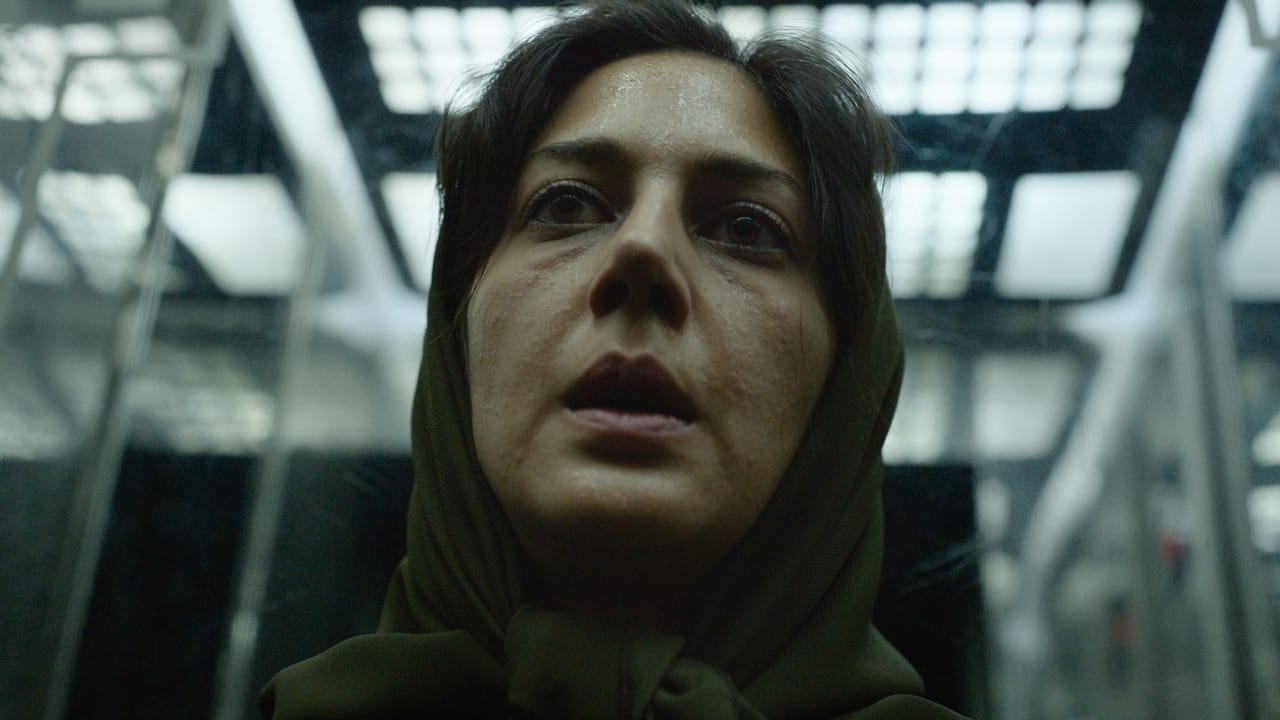
For its first hour or so, Holy Spider, the third feature from Iranian-born Danish expat Ali Abbasi (Border), depicts misogynistic violence along two parallel tracks. One narrative thread follows a female journalist, Arezoo Rahimi (Zar Amir-Ebrahimi), who’s just arrived in Mashhad, located at the northeast corner of Iran, to report on a series of murders taking place in the city. Her scenes alternate with a portrait of the serial killer in question, Saeed (Mehdi Bajestani), a middle-aged man whose modus operandi involves picking up sex workers on the street, bringing them back to his apartment (when his wife and kids are away), and strangling them to death with their own headscarves. That’s obviously a symbolic choice of murder weapon, echoed by the routine indignities and outright violations that Arezoo—who got fired from her previous job after filing a sexual-harassment complaint—has to cope with, just by virtue of being a woman in a patriarchal society. We watch one woman’s life be devalued, and then we watch a different woman’s life get entirely snuffed out. Back and forth. An implicit, pointed equation.
Here's the main problem with Holy Spider: That’s it. That’s the movie. I’ve described the entire movie to you. (Not actually true, but the one interesting aspect’s gonna be preceded by a big ol’ spoiler alert.) Once you’ve grasped what Abbasi’s doing, which doesn’t take very long, there’s very little else to hold your attention over the cyclical, slightly plodding expanse of that initial hour. It’s admittedly startling, at the outset, to see an apparently Iranian film (actually shot in Jordan) that features what would likely be R-rated nudity and violence; I’m not sure whether any serial-killer stories have emerged from Iran itself, but they’d have to be a whole lot more circumspect than this one. That superficial jolt quickly fades, though, and neither of the film’s central characters quite fills the void. This year’s Cannes jury awarded its Best Actress prize to Amir-Ebrahami, who’s appealingly tough and spiky (and looks like a totally different person in her hotel room, with modishly short hair and bright red toenails, than she does out in public, encased in her hijab) but doesn’t have anything other than doggedness to play in the role. And while Bajestani manages to suggest a component of sexual sadism in Saeed’s crimes, he can only push that so far, because…well, see below.
Okay, here’s where this review reveals something that Holy Spider strategically chooses to withhold until the very end. Not knowing this information in advance made the film’s second half significantly more compelling, so bail now if you want to have the same experience.
Saeed isn’t an invention of Abbasi and his co-screenwriter, Afshin Kamran Bahrami. Holy Spider is loosely based on the case of Saeed Hanaei, who murdered 16 women (either mostly or exclusively sex workers; I can’t find a clear indication of which adverb is the correct one) and was eventually apprehended, tried, convicted, and executed. All of which happens in the movie, probably more or less in accord with how it happened in real life. Tellingly, though, while Abbasi includes some expository text to that effect—“Inspired by true events in the city of Mashhad, Iran, between 2000 and 2001”—he doesn’t place that sentence at the beginning, where you’d ordinarily find a hey-true-story alert. It appears only after the movie’s entire narrative has been resolved. And his reason for doing that, assuming that I’m correct in my assumption, is kind of fascinating. Holy Spider almost certainly won’t be shown in Iran, where viewers might be familiar with the events it dramatizes, and it craftily weaponizes the natural expectations of viewers who won’t be familiar with them. Expectations that are entirely rooted in how fictional narratives do and don’t work. In other words, Abbasi would (I believe) prefer that we assume Holy Spider to be pure fiction until after it’s over.
Why? Because otherwise Holy Spider’s second hour would be as dramatically arid as its first. (There’s one reasonably exciting, non-meta suspense sequence smack in the middle, when Arezoo poses as a sex worker—Iran being Iran, her disguise consists solely of incongruously heavy makeup—to find the killer and riskily accompanies him to his apartment, hoping that the local reporter who’s tailing them will contact the police in time.) Abbasi’s most anguished indictment of Iranian society kicks in after Saeed’s arrest, as he mounts a defense claiming that he did nothing wrong by killing “corrupt” women—that God applauds his worthy deeds, and everyone else should do likewise. Horribly, many people do (and did, two decades ago), including his own wife and teenage son. Crowds form outside the prison, chanting for Saeed’s release; conservative papers print editorials urging clemency. Even the victims’ families frequently voice, if not their approval, at least their relief that the mortification of being related to someone so obscenely sinful has ended. (Arezoo interviews these family members, and sits in the courtroom during Saeed’s trial, but has even less of a character to work with once the investigatory part is over.) It’s outrageous and upsetting.
Thing is, though, it’s no more outrageous and upsetting onscreen than it is in my description of it in the previous paragraph. Abbasi and Bahrami present the misogyny, but they don’t explore it; I’m honestly not sure that there’d be any means of doing so. It’s pretty damn cut and dried. What they do instead, however, successfully keeps ignorant viewers off guard. While Abbasi apparently didn’t want to fictionalize such a well-known (in Iran) case, he’s savvy enough to recognize what conclusions the average moviegoer will likely jump to, and he structures the film accordingly. At three crucial points, what happens cuts against the grain of what theoretically “should” happen, according to narrative convention (which is just a fancy way of saying “what would seem fully satisfying within a given context”). We’re given multiple reasons to believe that Saeed won’t immediately be arrested after Arezoo escapes his clutches. In fact, he’s arrested within hours. Then we’re encouraged to assume, via despairing remarks made by several characters (and, again, via how stories usually work), that Saeed will be acquitted, rather than made to pay for what he did. In fact, he’s found guilty. Finally, we’re more or less flat-out told that powerful, corrupt officials will engineer Saeed’s escape before his death sentence can be carried out. In fact, he dangles from a rope as scheduled (which is even more of a surprise to him than it is to us). At every turn, Holy Spider appears to be a film about how easily horrible men can evade consequences for their actions…except that each of those turns sees the (Iranian) system function exactly as it’s supposed to.
Does this offbeat approach “work”? I dunno. As I say, it kept me alert throughout the second half, thanks to the sheer bizarre novelty of everything that could go wrong, thereby making the movie more traditionally riveting, instead going right. It’s like watching a rom-com in which the lovers continually aren’t impeded by developments that look as if they’re sure to cause major trouble. Plus, that gave me something to write about, for which I’m very grateful. In the end, though, “perverse” can accomplish only so much on its own, especially when the perversity in question amounts to normality where we’d expect perversity. Holy Spider is still a film that foregrounds its worthy but very blunt thesis at the expense of its characters, and that relies on fakeouts of sorts—admittedly, we do it to ourselves, but with Abbasi’s savvy complicity—to create and sustain tension. On top of which, it’s largely unexceptional to look at, employing the camera strictly as an image-capture device rather than as a tool for heightening our emotional and aesthetic response. I may remember it semi-fondly as a curiosity, but not as anything more.
One of the first notable online film critics, having launched his site The Man Who Viewed Too Much in 1995, Mike D’Angelo has also written professionally for Entertainment Weekly, Time Out New York, The Village Voice, Esquire, Las Vegas Weekly, and The A.V. Club, among other publications. He’s been a member of the New York Film Critics Circle and currently blathers opinions almost daily on Patreon.






